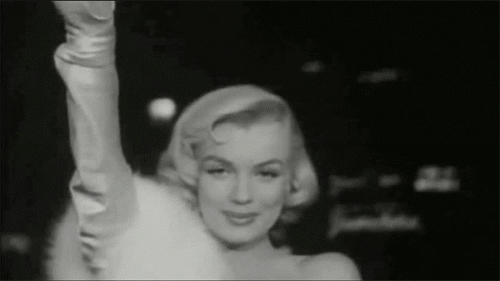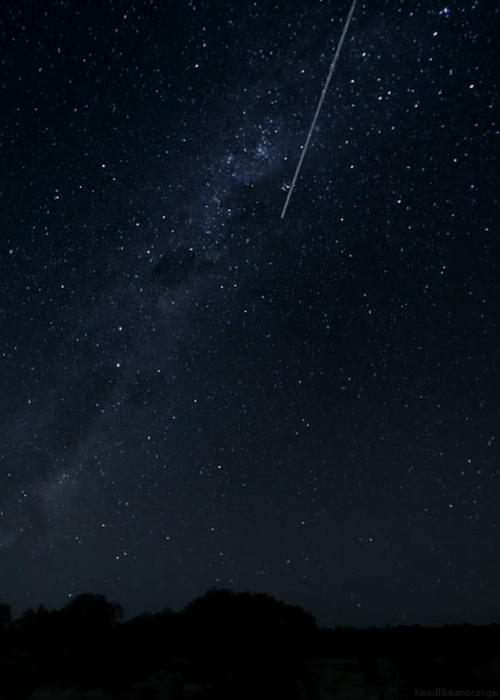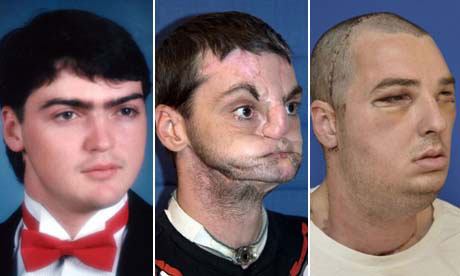Internet Debris
Meet three young women who want to teach our repressed society
how to explore its relationship with death.

(PHOTO: SISQOPOTE/SHUTTERSTOCK)
May 16, 2013 • By Kim O'Connor • 7 Comments
At first, it might sound gross or a little bit scary. Ridiculous, even. You wonder if it’s going to hurt. Will it be meaningless? Messy? What if you don’t know what to do—or if it happens too fast or too slow?
Relax, man. It’s totally natural. WE ARE ALL GOING TO DIE.
Funny how rarely this seems to come up. Imminent death is the only thing you have in common with every single person you meet. And unlike, say, weddings and weather, the subject of mortality is always interesting. Trying to make small talk about death, though? Well, bring it up at your next business lunch and see how that goes.
The truth is most of us go to great lengths to avoid having to talk—or even think—about death. Nearly half of people over the age of 65 haven’t yet brought themselves to face end-of-life planning. In a culture saturated with violence, we’re not sure how to talk to our kids about what happened at Sandy Hook and the Boston Marathon. And most people prefer to suffer in silence when they deal with common challenges like eldercare and miscarriages.
Are fear and denial really the best ways to approach something that’s unavoidable?
Death has always been inevitable, of course, and so has grief, but there was a time in the not-so-distant past when the attitudes and practices surrounding it were more open and practical.
In part, this comfort level was out of sheer necessity. In the 19th century, before doctors learned to wash their hands, germs killed a lot of people. Since funeral homes (and indeed, the funeral industry) didn’t exist, most people died in their beds, and corpses remained at home for up to three days while the family prepared for the funeral—which was also at home. Death was very much a part of daily life.
That changed for a variety of reasons, but the most important shift occurred during the Civil War. Suddenly, embalming—a preservation technique that had been reserved for medical cadavers—was practiced widely on Union dead so the remains would survive the journey home to their families. For those who could afford it, embalming became the preferred way to preserve a corpse—better even than packing soldiers into kegs of whiskey, another technique used to ship bodies north during high summer.
According to Gary Laderman, a prominent historian of death, the American psyche was undergoing a brutal transformation even as the professional funeral industry coalesced. The devastation wrought by the war required a certain disengagement with death, something akin to the mindset of traumatized survivors in books and movies about the zombie apocalypse. A long estrangement with death ensued, where it was increasingly pushed away from the home—out of sight and out of mind.
Dwelling in darkness for almost 150 years now, death in America has turned into something unspeakable.
The Order of the Good Death wants you to turn on the light.
FOUNDED BY CAITLIN DOUGHTY, a thoughtful young mortician in Los Angeles, the Order of the Good Death is a collective of death professionals, artists, and academics who promote real talk about death and dying. While its name has an occult quality, the Order’s mission is actually quite public: to encourage people to be “death positive,” or open to exploring their thoughts, feelings, and fears about mortality.
While it started in 2011 as a network of around 10 friends and like-minded colleagues, the Order quickly expanded as it resonated with other writers, scholars, and designers. The growing group has worked hard to make death a part of the cultural conversation. They approach this task through a wide variety of projects aimed at different audiences—some within the funeral industry, and many others further afield.
Some of the Order’s most prominent movers and shakers are young women, which is remarkable, given that as recently as 1971, 95 percent of the students enrolling in mortuary schools were men. To name three, there’s Doughty herself, who remains the head and heart of the Order; Sarah Wambold, a mortician who’s reinventing the American funeral home; and Megan Rosenbloom, a medical librarian who’s launching an innovative conference called Death Salon this fall. Dissatisfied with the trappings of the traditional funeral industry and the cultural atmosphere surrounding death, these women want to help repressed Americans become more intimate with their most morbid thoughts and feelings.
THE SELF-APPOINTED NATIONAL spokeswoman for death, Caitlin Doughty is the reaper’s most dedicated PR person.
Doughty is best known for her winsome Web series, “Ask A Mortician,” a lighthearted and informative exploration of viewers’ questions about death. Featured on Jezebel and bolstered by an aggressive social media campaign on Facebook and Twitter, the videos help direct traffic to the Order of the Good Death’s website, a sort of central repository where Doughty curates essays, artistic videos, and other media. She also writes a blogthat she occasionally lends to other Order members who want a platform for their own thoughts and projects.
The mortician first heard the call to public service five years ago, around the time she began working at a crematory in Los Angeles. It was her first real job in the industry. The work was more challenging than she expected, and she was surprised by many of the processes and practices. A lifelong fascination with death had not prepared her for the harsh physical realities of fire, ash, and bone. Surprised to realize there are still some things you just can’t Google, Doughty recognized the world sorely needed someone who was willing to share basic facts about the death industry. She decided then and there that her life’s work would be in public education.
Her first stop after the crematory was mortuary school. On the other side of the mirror, Doughty learned that the funeral industry itself was estranged from death in its own way. To a fault, the focus was on technical skills and body work. Having devoted serious thought to death during her undergraduate career at University of Chicago, where she studied medieval history, Doughty was scandalized by what she saw as a lack of emotional and intellectual rigor in the curriculum.
“A lot of funeral directors don’t really reflect very deeply on their place in the industry and their relationship with death,” she said. “They think if they do that, it will open Pandora’s box to all sorts of negative emotions that are very hard to handle.”
But Doughty doesn’t think that funeral homes are doing society any favors by placing people who have “passed on” in their “slumber rooms.” And she has a general distaste for expensive products like “protective” caskets that make the natural process of decay sound like a grisly nightmare. At the top of her long list of gripes: the practice of embalming, which she sees as unnecessary and bad for the environment. Doughty wants to educate people about their options and to promote greener choices like natural burial (sans casket) and cremation.
She’s also an advocate of home corpse care. “The thing that most people don’t know is that death doesn’t really require a professional at all,” she said. “There’s no reason that you can’t do most everything surrounding the death process yourself. I consider my role as a mortician really as a kind of facilitator and hand-holder to get people to do most of the work.”
While she’d like to see American traditions circle back to resemble what they were before the Civil War, she realizes that DIY corpse care is probably too ambitious for most people. After she finishes her memoir (which will be published in 2014 by Norton, the highest bidder in an eight-publisher auction), Doughty will open an alternative funeral home in Los Angeles, guiding people through the emotional, logistical, and bureaucratic challenges they face when someone dies.
MEANWHILE, SARAHWAMBOLD IS preparing to open her own alternative funeral home, Continuum, later this year. Where Doughty has worked on the national level to rehabilitate death’s public image, Wambold has focused more on serving locals in her community of Austin, Texas.
“The general idea is to reimagine the funeral home as a dual space for the living and the dead,” said Wambold, who wants her facility to function as a performance space and an art gallery. Put off by the gimmicky customization options like the golf-themed funerals offered by the traditional funeral industry, she wants to offer services that celebrate individuality. “We want to have a conversation with people about what death means to them,” she said. “Most funeral homes really don’t do that. They just don’t fill that need.
“I was inspired by Austin,” she said. “It’s a different sort of city than I had ever lived in. The people here seem to support local businesses, and it seemed like they were underserved in the funeral service area. I felt like they needed a funeral home that was more community-oriented and creative.” Unable to find a job at the sort of funeral home she had in mind, Wambold came to the reluctant conclusion that she’d have to build one herself.
A big part of her vision is simply in rejecting the stuffy parlor aesthetic favored by traditional funeral homes. “The worst thing about being a funeral director was having to walk into the funeral home,” she said, recalling a job she left in 2009. “I just hated the overstuffed chairs, the heavy drapery, the generic paintings—all of that.”
Wambold has been documenting the process of opening Continuum (“a nightmare”) on Doughty’s blog since 2012. There have been many challenges and discouraging developments along the way. In addition to the usual kinds of problems that small start-ups face, such as finding funding and an affordable workspace, Wambold is dealing with obscure levels of bureaucracy and inscrutable state laws. Most recently, she’s been trying to puzzle out why the state of Texas demands that she own embalming supplies if she’s not required to practice embalming. After serious study, the answer remains unclear.
Once she finally opens her doors for business, Wambold will face another difficult hurdle: marketing. While she said that people seem receptive to the concept of Continuum, the ideas behind it generally require some degree of elaboration. The 30-second elevator pitch of a funeral home cum performance space can sound sort of flip, particularly to someone who isn’t even aware there’s such a thing as an alternative funeral industry. As professionals like Wambold start their own businesses, the Order of the Good Death will transition from a philosophical movement to an organization of flesh-and-blood members with loans and light bills. Their bottom lines add a new sense of urgency to the organization’s mission.
TO HELP EASE THOSE growing pains, the Order will host its first formal conference, Death Salon, from October 18 to 20 in Los Angeles.
Death Salon is the brainchild of Order member Megan Rosenbloom, a medical librarian at the University of Southern California. A rare books nerd, Rosenbloom has been organizing talks and events that promote her library’s special collections since 2009. While program development and community outreach is unusual for someone in her role, her favorite part of the job is developing exhibits, leading tours, and hosting speakers. This year’s big guest will be Mary Roach.
While many are quick to write off old medical texts as curiosities, Rosenbloom sees them as essential to the curriculum at the medical school. “I have these books from around the time when this country was founded where they show what a baby looked like in utero,” she said, by way of example. “Their understanding, the way they believed things were situated, is just comical.” She uses materials like these, which were at one time state-of-the-art, to teach medical school students about humility—a useful mindset in today’s technology-obsessed milieu. “I don’t think you have to be hyper-serious about interacting with the material, but it grounds you in the perspective that we don’t know everything,” she said. “They have to understand they might be wrong.”
Similarly, she feels that historical perspective adds an important dimension to contemporary conversations surrounding death. The precise point at which a person dies, for instance, has never been well understood; to prevent people from being buried alive, some caskets used to come equipped with a primitive alarm system—a string attached to a bell situated on top of the grave. “Our understanding of death is still a little nebulous,” Rosenbloom said, drawing a parallel between those bells and the controversy that now surrounds abortion, vegetative state, and assisted suicide. “I think the history of medicine can really give people perspective on the ways that other people have interacted with these issues in the past.”
The idea for Death Salon came about earlier this year, when Rosenbloom and other Order inductees were talking about how much they’d enjoy the chance to formally meet. With her experience at the library and the organizational feat of planning her own wedding last year, Rosenbloom figured she had the logistical know-how to plan the event.
Death Salon will incorporate Rosenbloom’s love of medical history with the varied perspectives of Order members from different disciplines. The goal is to offer something for everyone, so the weekend will be a mix of private Order business and high-profile events. Friday’s daytime programming, which will be curated by Doughty, will be closed to the public, but she is also curating a special public show on Friday night. That event, Death Cabaret, will combine elements of a party with flash talks, short films, and a performance by Adam Arcuragi, the founder of the “death gospel” genre.
Saturday will feature symposium-style programming curated by Joanna Ebenstein, whose Morbid Anatomy project’s recent Kickstarter was like the Veronica Mars of the weird book world. Sunday will involve a field trip organized by Atlas Obscura, a travel website dedicated to unusual destinations. Throughout the weekend, Death Salon will host pop-up shops by L.A. businesses and offer beers crafted by local breweries.
“As I’ve been putting it together, I’ve been astounded at the level of interest,” said Rosenbloom, who reports that there has already been talk of franchising Death Salon. “People from across the country are contacting me because they want to volunteer. I was so surprised and flattered that we’re doing something that people are really responding to.
“I’m not going to pretend that I’m the most death-positive person, or that I’m completely comfortable with the idea that I could drop dead at any moment,” she said. “But I think it’s really worthwhile for people to engage with that. I feel the zeitgeist is changing. People are rejecting the idea that the denial of death is a good thing.”
Doughty, too, senses something in the air that extends beyond her own efforts to agitate for change. “I know there’s a real cultural shift coming,” she said. “There’s a ton of new people doing this work.”
The death-positive movement has been built on a staggering statistic: our 100 percent mortality rate. In a little over a century, the seven billion people that currently populate this planet will all be dead. You and me and everyone we know. Not a damn thing we can do about it.
What happens after that—well, that’s up to you.
Text and images via Pacific Standard

If you like what you see here -
tell your friends!


tell your friends!












